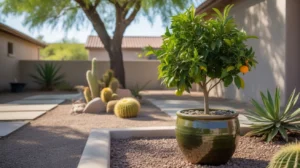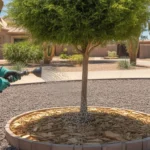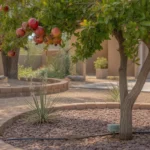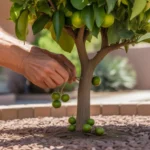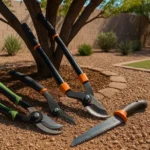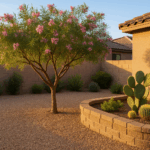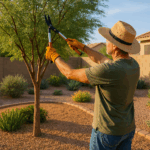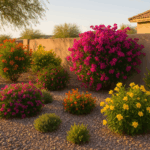Growing citrus trees in containers is a popular choice for many Southwest gardeners, allowing them to enjoy fresh fruit even in smaller spaces. However, the intense heat of the region can pose unique challenges for potted citrus. With the right care techniques, you can help your container-grown citrus thrive despite the scorching temperatures.
Choose the Right Container and Soil
Start by selecting a large, sturdy container with ample drainage holes. Terracotta pots are a classic choice that allows for good air circulation, but they can dry out quickly in the heat. Glazed ceramic or plastic pots retain moisture better, but ensure they have sufficient drainage to prevent waterlogging.
Fill your container with a well-draining potting mix formulated for citrus or make your own blend using equal parts potting soil, perlite, and compost. Avoid using garden soil, which can become compacted and hinder drainage. The right soil will hold moisture while allowing excess water to drain freely.
Provide Ample Water and Drainage
Citrus trees have high water requirements, especially when grown in containers. In the intense Southwest heat, potted citrus may need watering daily or even twice a day during the hottest months. Check the soil moisture regularly by sticking your finger about an inch deep. If it feels dry, it’s time to water.
Water your citrus tree slowly and deeply until you see water running out of the drainage holes. This ensures the entire root ball gets moistened. Don’t allow the pot to sit in a saucer of water, as this can lead to root rot. If you live in an area with hard water, consider using filtered or rainwater to prevent mineral buildup in the soil.
To help retain moisture and regulate soil temperature, apply a layer of organic mulch, such as shredded bark or straw, around the base of the tree. Keep the mulch a few inches away from the trunk to avoid moisture-related issues.
Protect from Extreme Heat
While citrus trees are generally heat-tolerant, the intense sun and reflected heat from pavement can scorch leaves and stress the tree. Position your potted citrus in an area that receives full sun in the morning but has some afternoon shade or filtered light during the hottest part of the day.
If a heatwave is forecasted, consider moving your potted citrus to a more sheltered spot or providing temporary shade with a shade cloth or umbrella. You can also mist the leaves with water in the early morning to help cool the tree and raise humidity levels.
Fertilize Regularly
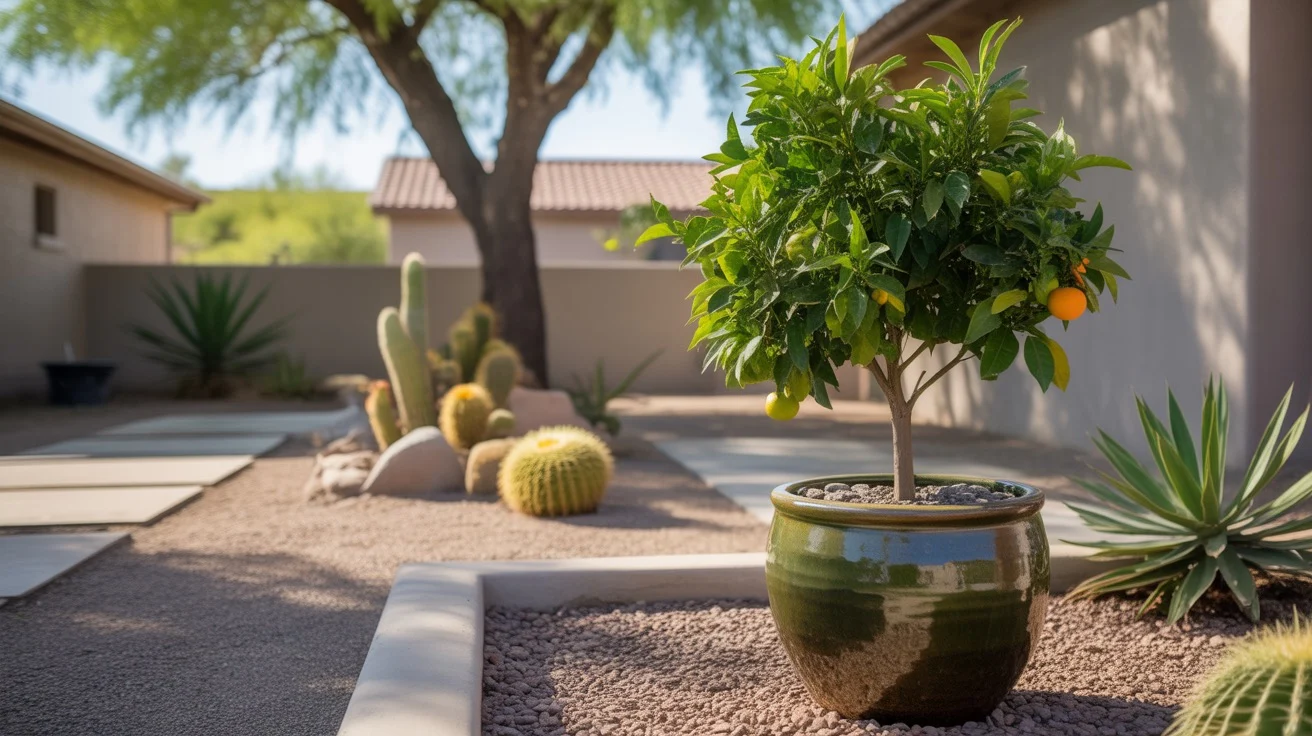
Citrus trees are heavy feeders and require regular fertilization to maintain health and fruit production. Use a slow-release, balanced fertilizer formulated for citrus, following the package instructions for application rates and frequency. In the Southwest, it’s best to fertilize from early spring through summer, tapering off in the fall to avoid encouraging tender new growth that could be damaged by winter cold.
Supplement with a liquid fertilizer every 4-6 weeks during the growing season for an extra nutrient boost. Be careful not to over-fertilize, as this can lead to leaf burn and damage roots. If you notice yellowing leaves, it could be a sign of nutrient deficiency or overwatering, so adjust your care routine accordingly.
Prune and Shape as Needed
Citrus trees grown in containers will need regular pruning to maintain their size and shape. Prune in the early spring before new growth emerges, removing any dead, damaged, or crossing branches. You can also trim back leggy growth to encourage a fuller, more compact canopy.
When pruning, be sure to use clean, sharp tools to avoid damaging the tree. Sterilize your pruning shears with rubbing alcohol between cuts to prevent the spread of disease. Avoid pruning more than one-third of the tree’s canopy at a time, as this can stress the tree and reduce fruit production.
Watch for Pests and Diseases
Potted citrus can be prone to various pests and diseases, especially in the warm, dry conditions of the Southwest. Regularly inspect your tree for signs of problems, such as yellowing leaves, sticky residue on leaves or stems, or visible insects.
Common pests include aphids, mealybugs, scale, and spider mites. Many can be controlled with a strong spray of water, insecticidal soap, or horticultural oil. More severe infestations may require stronger treatments, such as neem oil or systemic insecticides.
Citrus trees are also susceptible to fungal diseases like citrus canker and greasy spot. These often appear as raised, brown lesions on leaves or fruit. Proper air circulation, avoiding overhead watering, and maintaining good sanitation practices can help prevent these issues. If you suspect a disease, consult with a local nursery or cooperative extension office for diagnosis and treatment options.
Protect from Cold
While the Southwest is known for its heat, winter temperatures can still dip below freezing in some areas. Most citrus varieties are cold-hardy to about 28°F, but prolonged exposure to cold can damage or kill the tree.
If cold weather is forecasted, protect your potted citrus by moving it to a sheltered location, such as a garage or covered patio. You can also wrap the tree in frost cloth or string lights for added warmth. Be sure to remove any coverings during the day to allow the tree to receive sunlight and air circulation.
By following these care tips and staying attentive to your tree’s needs, you can successfully grow potted citrus in the challenging conditions of the Southwest. With the right container, soil, watering, fertilizing, and protection techniques, you’ll be rewarded with a bountiful harvest of sweet, juicy fruit for years to come.

